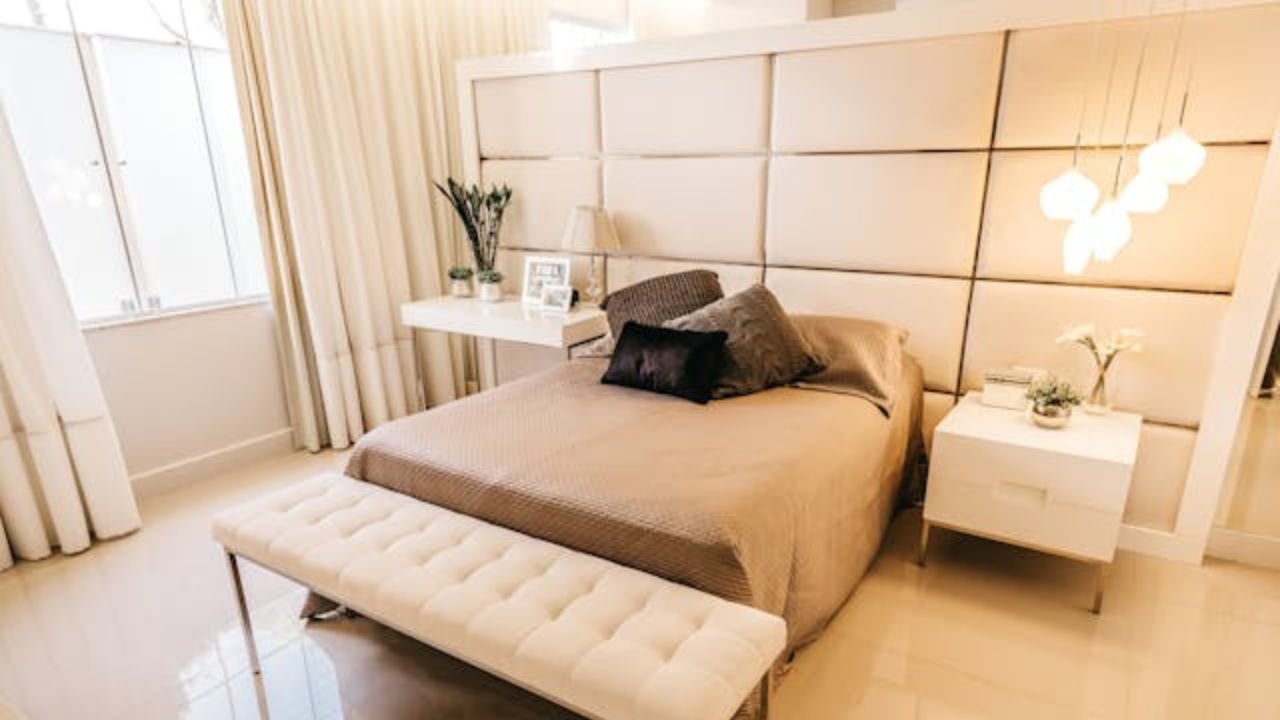
With an increasingly fast-paced lifestyle, home becomes a sanctuary — and the bedroom, a key space for comfort. In this context, bedscaping has emerged, a trend that emphasizes bed organization and aesthetics to create a cozy, relaxing, and therapeutic environment.
The term bedscaping combines “bed” and “landscaping”. In practice, bedscaping is the art of making the bed with attention to aesthetic and sensory details, transforming it into the focal point of the bedroom.
More than simply “making the bed”, this technique involves the strategic choice of fabrics, colors, textures, and the arrangement of pillows, throws, and other decorative elements.
Why is Bedscaping trending?
The rise of bedscaping is closely linked to the growing pursuit of quality of life and mental health. In times of chronic stress and anxiety, affective and intentional décor has gained strength. Bedscaping goes beyond aesthetics: it invites slowing down, creates a self-care routine, and promotes more restful sleep — all key elements for emotional balance.
How can Bedscaping help reduce anxiety?
The visual organization of a space has a direct impact on our emotional state. Chaotic environments tend to cause discomfort, while tidy and harmonious spaces bring a sense of peace. Here’s how bedscaping contributes to that:
- Soft textures: fabrics like Egyptian cotton, linen, or percale provide tactile comfort and coziness.
- Calming color palette: neutral, pastel, or earthy tones help soothe the mind.
- Positive visual stimulation: symmetry in arrangement and elements like candles, plants, or soft lighting create a therapeutic atmosphere.
- Daily ritual: making the bed with care every day becomes a moment of pause and mindfulness — a true self-awareness ritual.
Key elements of Bedscaping
If you want to embrace bedscaping, here are the essential elements:
- Headboard and bed base: choose a model that combines visual comfort and functionality.
- Quality bedding: invest in natural, breathable fabrics for sheets and covers.
- Layering: use throws and quilts to create visual depth and softness.
- Decorative pillows: go for different sizes and shapes, keeping a cohesive color palette.
- Indirect lighting: lamps, warm-toned bulbs, or fairy lights can transform the room’s atmosphere.
- Scent and ambient sound: essential oils, diffusers, and calming sounds enhance the sensory experience.
Practical tips for perfect Bedscaping
- Start with a soft color palette: white, beige, light gray, serenity blue, or sage green are great options.
- Balance decorative elements with open space for a clean look.
- Use an odd number of pillows (e.g., 3 or 5) for a more dynamic visual effect.
- Choose natural fabrics and avoid synthetic materials that trap heat.
- Add a decorative tray with books, candles, or a tea cup to personalize the look.
Bedscaping and lifestyle: an invitation to self-care
More than just a design trend, bedscaping is an invitation to slow living — a lifestyle that values time, well-being, and the small rituals of everyday life. Incorporating this practice into your routine doesn’t require major investment, just intention. It’s about turning the act of making the bed into a gesture of self-care.
Bedscaping is here to stay. Amid the rush of daily life, creating a restful space that is both aesthetically pleasing and emotionally comforting can be a powerful ally against stress and anxiety. With small adjustments and mindful choices, it’s possible to transform your bed — and in turn, your mental well-being.
If you’re looking for a simple, beautiful, and effective way to care for yourself, start with your bedroom. Start with bedscaping.
This content was created with the help of AI and reviewed by the editorial team.

